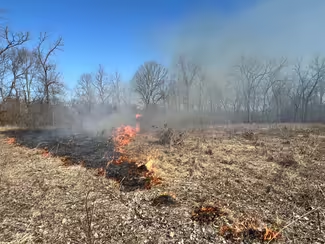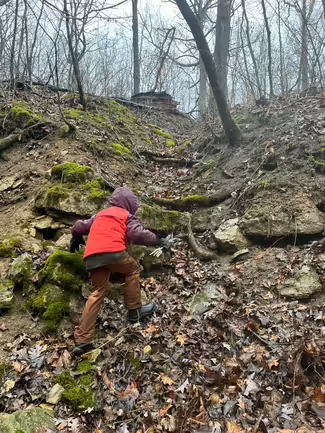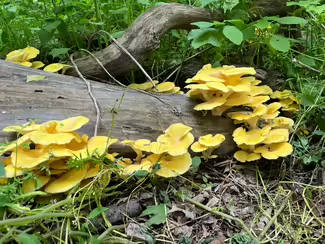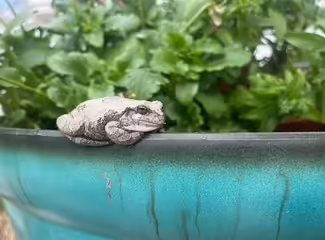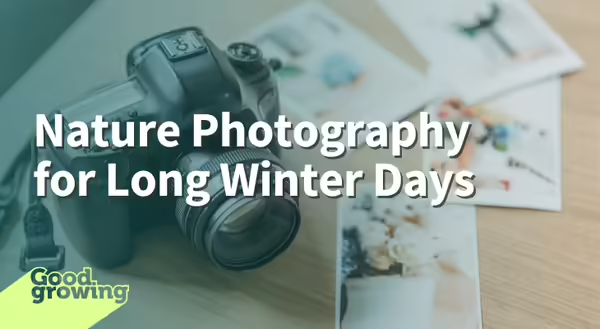
It is official, winter is upon us. The holiday season has come and gone, the calendar has turned over to a new year, and much of the Midwest is blanketed in snow. On these long winter days, one of my favorite activities to do is to dream about warm summer days. I do this by reflecting on the past growing season and planning for the upcoming growing season, by enjoying garden produce preserved specifically for these winter days, and thumbing (okay scrolling) through photos of nature I’ve taken over the past year.
Benefits of nature photography
Looking through photos of nature is more than a fun thing to do, it can make us feel better. A growing body of evidence continues to expand our understanding that connections with nature improve psychological outcomes. A subset of this field of research offers evidence that direct interaction with nature isn’t the only way to achieve benefits, in fact scenes of nature can also produce improved mental and emotional benefits.
While nothing fully replaces a full sensory interaction with nature, viewing photos of natural spaces and elements is a convenient way to access some of the benefits enjoyed through nature interactions. Reduced stress, improved mood, enhanced cognitive capabilities, and overall well-being are some of the benefits observed by looking at photos of nature.
As I look through the hundreds of photos I’ve taken that feature nature, I observe that there is a wide variety of scenes. I have large-scale landscapes and small-scale vignettes. My photos include a range of subjects and compositions that include insects, petite flowers, large trees, green forests, colorful blooms, kids, adults, dogs, and so much more. According to research (and personal experience), each of these photos has the potential to provide mood-enhancing benefits.
If you have taken photos of your landscape or the landscapes you have enjoyed, I encourage you to take time during these winter days to enjoy them and enjoy the benefits that come with exposure to nature. If you haven’t captured your own photographs, enjoy scenes captured by others in books, magazines, on the internet, at a local museum, or shared from a friend.
Photography tips to try this year
If you are interested in nature photography in 2025, or are looking to take your garden photography to the next level, here are a few tips:
- Use natural lighting to your advantage. Lighting is one of the critical factors in photography, plan to photograph your garden during different light conditions.
- Get up early or stay out late: Shoot photos around the time of sunrise or sunset to capture golden hour light. The sunlight is softer and casts a warm glow on the landscape.
- Embrace the clouds: Overcast days help defuse sunlight, reducing harsh shadows and enhancing the vibrancy of colors.
- Avoid direct sunlight: Direct sunlight can wash out colors and create harsh shadows. If shooting when conditions are bright and sunny, look for shaded areas.
- Change your perspective. Moving into a new position or looking at the landscape from a different angle can transform an ordinary scene into an extraordinary one.
- Get low: Squatting down to the level of plants and insects can highlight their unique qualities.
- Use lines in the landscape: Take advantage of lines in the landscape to lead the eye through the landscape is a powerful way to organize a photo. Pathways, rows of plants, fences, or creeks are examples of lines found in the landscape.
- Focus on the details: Getting close to the subject of the photograph provides an opportunity to capture intricate details and patterns.
Good Growing Fact of the Week: Utilize the rule of thirds to create a more interesting photo. The rule of thirds is a composition guideline that divides a scene into a three-by-three grid and then align the subject of the photo along these lines.
Thank you for reading!
Sign up for our emails! Want to get notified when new Good Growing posts are available? SIGN ME UP
Give us feedback! How helpful was this information (click one): Very helpful | Somewhat helpful | Not very helpful
MEET THE AUTHOR
Emily Swihart is a horticulture educator with University of Illinois Extension, serving Henry, Mercer, Rock Island, and Stark counties since 2021. Emily provides horticulture programming with an emphasis on the home gardener, the urban forest, native plant ecosystems, and landscape design. Additional responsibilities include supporting local county Master Gardener and Master Naturalist volunteers - providing training, continuing education, advanced training, and their involvement in seasonal events and community outreach programs.
